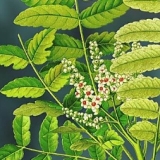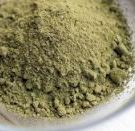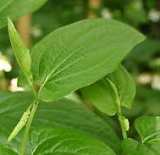만성염증은 암과 심혈관질환, 당뇨병, 관절염, 알츠하이머병, 폐질환, 자가면역질환 같은 광범위하고 다양한 질환을 매개하는 것으로 알려졌습니다. 아라키돈산(arachidonic acid) 신진대사 경로는 염증생성을 비롯해 항상성 기능(homeostatic function)을 조절하는 주요 기전의 하나를 이루고 있습니다. 불포화지방산(unsaturated fatty acid)인 아라키돈산은 신체에서 화학적 전달물질 기능을 하는 호르몬과 유사한 프로스타글란딘(prostaglandins)과 혈소판응집과 혈전생성에 관련된 트롬복산(thromboxanes) 같은 조절물질의 합성에 사용됩니다. 아라키돈산은 오메가-6 지방산의 한 형태입니다. 오메가-6 지방산은 아라키돈산, 감마리놀렌산(gamma linolenic acid), 리놀산(linoleic acid) 3가지 형태가 있습니다. 체내에서 리놀산(linoleic acid)은 감마리놀렌산(gamma linolenic acid)으로 변환되며, 이는 다시 분해되어 아라키돈산(arachidonic acid)이 됩니다. 아라키돈산(arachidonic acid) 형태의 오메가-6 지방산은 계란 노른자, 육류(특정 내장부위), 붉은색 육류의 유제품, 어패류 및 기타 동물성식품에서 찾아볼 수 있습니다. 인체는 어느 정도의 아라키돈산이 필요하지만, 과도하면 해가 될 수 있습니다. 만일 과도한 섭취를 하면 아라키돈산은 염증을 촉진하므로 암발생 위험증가를 비롯해 건강에 여러 심각한 위험을 미칠 수 있습니다. 아라키돈산은 여러 등급의 신호전달물질의 주요한 전구물질이며, 그 대사과정에서의 변형은 인체의 발암기전 (carcinogenesis)과 관련되어 있습니다.
잘못된 식이 선택의 영향으로 과량의 아라키돈산이 생성되면 신체이상을 겪게되고, 아라키돈산을 제거하기 위해 신체에서는 5-LOX (5-Lipoxygenase) 같은 효소들의 생산을 증가시킵니다. 류코트리엔(leukotriene) 경로에 관여하는 것으로 알려진 LOX (Lipoxygenase) 효소에는 5-LOX, 12-LOX 및 15-LOX 3가지가 있습니다. 이중 가장 주목을 받는 5-LOX는 류코트리엔(leukotriene) 생합성의 차단에 관련된 핵심 효소로 대두되고 있습니다. 5-LOX는 주로 백혈구(leukocytes), 수지상세포(dendritic cells), 죽상경화조직의 세포(foam cells)에서 발현됩니다 (다른 세포에서의 생성은 DNA 메틸화를 통해 차단됨). 5-LOX는 아라키돈산이 류코트리엔(leukotriene)으로 대사되는 과정의 핵심효소입니다. 5-LOX는 아라키돈산을 류코트리엔(leukotriene)으로 변환시키며, 이로써 인체 세포의 성장을 강화시키고, 생존을 증진시키며, 세포자멸사(apoptosis)의 억제를 가능케합니다. 류코트리엔(leukotriene)은 면역조절, 천식, 염증 및 여러 알레르기성 증상에 크게 관여하는 잠재력을 지닌 지질 매개물질(lipid mediators)입니다. 류코트리엔 같은 염증매개물질은 정상세포에서 단백질들의 발현증가나 재분포, 형질전환세포가 지닌 특성의 원인으로 작용합니다. 이러한 변환들은 별개의 상위 신호전달 기전들(upstream signaling mechanisms)을 포함하며, 이는 종양발생의 위험을 증가시키는데 수반되는 세포자멸사(apoptosis)와 세포증식 비율의 변형, 변화를 가져옵니다. 이들 매개물질들이 염증성상태와 종양발생 간의 관련성 설명을 가능케 할 수 있을 것입니다.
Roles of inflammation in cancer initiation, progression, and metastasis.
Regulation of inflammation in cancer by eicosanoids.
Beta-adrenergic and arachidonic acid-mediated growth regulation of human breast cancer cell lines.
Structures and mechanisms of enzymes in the leukotriene cascade.
Leukotriene B4 creates a favorable microenvironment for murine melanoma growth.
효소 5-LOX는 폐암, 간암, 췌장암, 대장암, 악성뇌종양, 유방암, 식도암을 포함한 여러 암의 발생과 진행에 관련되었습니다. 여러 실험자료들을 통해 이러한 가설의 근거가 수립되었고, 5-LOX의 발현과 종양세포의 생존력(viability) 간의 상관관계가 제시되었습니다. 첫째, 여러 독자적 연구에서 주요 종양세포를 비롯해 확립된 암세포주에서 5-LOX의 과발현이 보고되었습니다. 둘째, 배양된 종양세포에 5-LOX생성물을 첨가시킨 결과 역시 세포증식의 증가 및 세포자멸사(apoptosis)에 저항하는 신호경로의 활성화가 이루어졌습니다. 5-LOX 안티센스기술(antisense technology)의 적용에서도 5-LOX 발현의 감퇴로 인해 종양세포 성장에 장애를 보였습니다. 끝으로, 약리적인 5-LOX의 억제는 세포주기 차단을 유도하고, 내재적 자멸사 경로(intrinsic apoptotic pathway)를 통한 세포사멸을 유발시킴으로써 종양의 성장을 억제하였습니다.
Lipoxygenase metabolism: roles in tumor progression and survival.
5-lipoxygenase: underappreciated role of a pro-inflammatory enzyme in tumorigenesis.
5-Lipoxygenase contributes to the progression of hepatocellular carcinoma.
Lipoxygenase-5 is overexpressed in prostate adenocarcinoma.
5-Lipoxygenase, a marker for early pancreatic intraepithelial neoplastic lesions.
Increased expression of 5-lipoxygenase is common in clear cell renal cell carcinoma.
5-LOX 억제제는 암세포의 막에 사멸수용체인TRAIL 수용체의 발현을 촉진시켜 계획된 세포사멸(programmed cell death)을 유도하므로, 효과적인 암치료 전략으로5-LOX 억제제 및 TRAIL을 복합 적용하는 치료법의 가능성이 제기됩니다. 또한 이들 5-LOX 억제제는 암세포에서 다른 사멸신호경로들 역시 활성화시키는 결과를 보여줍니다.
Inhibition of 5-lipoxygenase pathway suppresses the growth of bladder cancer cells.
The mechanisms of lipoxygenase inhibitor-induced apoptosis in human breast cancer cells.
 보스웰리아(boswellia) 추출물은 가장 잘 알려진 천연의 5-LOX 억제성분으로 대두되고 있습니다. 보스웰리아(boswellia)의 주요 성분의 하나인 AKBA (acetyl-keto-beta-boswellic acid)는 5-LOX 억제물질입니다. AKBA는 여러 기전을 통해 암세포의 증식을 막아내는 작용을 합니다. AKBA는 암세포 내 자멸사 신호경로(apoptotic pathways)를 활성화시켜 암세포 표면의 사멸수용체 신호 스위치를 켜므로써 자연사멸을 유도합니다. AKBA는 PI3K/Akt 신호경로 역시 활성화시키는 것으로 보이며, 암의 발병과 분화 성장에 관여하는 PI3K경로 억제작용으로 AKBA가 유도하는 세포자멸사(apoptosis)를 한층 강화시킵니다. AKBA는 암세포가 전이를 유발시키기 위해 이용하는 케모카인 수용체(chemokine receptor) CXCR4의 활성을 억제합니다 (CXCR4는 세포의 이동을 촉진).
보스웰리아(boswellia) 추출물은 가장 잘 알려진 천연의 5-LOX 억제성분으로 대두되고 있습니다. 보스웰리아(boswellia)의 주요 성분의 하나인 AKBA (acetyl-keto-beta-boswellic acid)는 5-LOX 억제물질입니다. AKBA는 여러 기전을 통해 암세포의 증식을 막아내는 작용을 합니다. AKBA는 암세포 내 자멸사 신호경로(apoptotic pathways)를 활성화시켜 암세포 표면의 사멸수용체 신호 스위치를 켜므로써 자연사멸을 유도합니다. AKBA는 PI3K/Akt 신호경로 역시 활성화시키는 것으로 보이며, 암의 발병과 분화 성장에 관여하는 PI3K경로 억제작용으로 AKBA가 유도하는 세포자멸사(apoptosis)를 한층 강화시킵니다. AKBA는 암세포가 전이를 유발시키기 위해 이용하는 케모카인 수용체(chemokine receptor) CXCR4의 활성을 억제합니다 (CXCR4는 세포의 이동을 촉진).
AKBA는 사이토카인(cytokines)과 항암제 성분에 의해 유도되는 암세포의 사멸을 강화하고, 침윤을 차단하며, 전사인자 NF-kB가 조절하는 유전자발현의 차단을 통해 파골세포발생(osteoclastogenesis)을 억제합니다. 더욱이 AKBA는 암 증식에 필수적인 혈관신성에 요구되는 혈관혈관내피세포증식인자(VEGF)의 억제를 통해 종양의 중식을 차단합니다. 보스웰산(boswellic acid)은 또한 암세포 복제에 필요한 중요한 신호전달물질도 차단합니다. 보스웰리아 오일 추출성분은 암성세포조직과 정상세포조직을 구분할 수 있어서, 종양세포의 생존력은 억제하지만 정상세포에는 보호작용을 합니다.
불행하게도, 보충제 형태의 보스웰리아 추출물(boswellia ectracts)은 용해성과 생리적이용율이 매우 낮습니다. 이는 경구복용을 하도라도 흡수가 어려워 위장관을 거쳐 대부분 바로 체외로 배출된다는 것을 뜻합니다. 보스터짐(BosturZym)은 상호상승작용을 일으키도록 특수 배합된 AKBA(보스웰산), 커큐민(curcumin), 터머린(turmerin)을 포함하여 신체적응토록 발효처리된 천연의 복합 추출성분들을 함유하고 있습니다. 보스터짐(BosturZym)은 암세포의 자연사멸을 유도하기에 충분할 정도의 완전한 용해성과 생리적이용율을 지닌 유일한 제품입니다.
Frankincense oil derived from Boswellia carteri induces tumor cell specific cytotoxicity.
보스웰리아 추출물(boswellia ectracts)이 직접적으로 5-LOX의 활성을 억제하는 것 외에도, 뇌의 송과선(pineal gland)에서 생성되는 수면 호르몬인 멜라토닌은 효소 5-LOX와 Cox-2의 발현을 간접적으로 억제하도록 오피어드 수용체(opioid receptors)를 활성화시킬 수 있습니다. 멜라토닌이 핵수용체(nuclear receptors)의 활성화를 통해 효소 5-LOX의 생합성을 억제하는 것입니다.
Melatonin: a hormone that modulates pain.
The nuclear receptor for melatonin represses 5-lipoxygenase gene expression in human B lymphocytes.
 페놀성분의 하나인 에스쿨레틴(Esculetin)은 5-LOX 억제물질로 작용합니다. 에스쿨레틴(Esculetin)은 항염증, 항산화 효과를 보이는 것을 비롯해 세포주기 차단(cell cycle arrest)과 세포자멸사(apoptosis)를 유도하는 성분으로 보고되었습니다. 연구에서는 에스쿨레틴(Esculetin)과 HA14-1이 존재할때 사멸수용체 DR4의 발현이 상향조절(upregulated)되고 ERK(extracellular-regulated kinase 세포외 신호조절 키나아제)가 활성화 된다는 것이 관찰되었습니다. 다른 연구보고들도 에스쿨레틴(Esculetin)이 사멸수용체 DR5단백질의 발현을 상향조절함으로써 TRAIL이 유도하는 세포자멸사(apoptosis)를 강화시킨다는 것을 시사하였습니다.
페놀성분의 하나인 에스쿨레틴(Esculetin)은 5-LOX 억제물질로 작용합니다. 에스쿨레틴(Esculetin)은 항염증, 항산화 효과를 보이는 것을 비롯해 세포주기 차단(cell cycle arrest)과 세포자멸사(apoptosis)를 유도하는 성분으로 보고되었습니다. 연구에서는 에스쿨레틴(Esculetin)과 HA14-1이 존재할때 사멸수용체 DR4의 발현이 상향조절(upregulated)되고 ERK(extracellular-regulated kinase 세포외 신호조절 키나아제)가 활성화 된다는 것이 관찰되었습니다. 다른 연구보고들도 에스쿨레틴(Esculetin)이 사멸수용체 DR5단백질의 발현을 상향조절함으로써 TRAIL이 유도하는 세포자멸사(apoptosis)를 강화시킨다는 것을 시사하였습니다.
Esculetin enhances TRAIL-induced apoptosis through DR5 upregulation in human oral cancer SAS cells.
카페인산(caffeic acid)은 커피를 비롯한 여러 식물과 식품에 함유되어 있는 페놀성 파이토케미칼(phenolic phytochemical)의 일종입니다. 클로로겐산(chlorogenic acid) 가수분해의 주요 대사물인 카페인산(caffeic acid)은 비경쟁적 방식으로 5-LOX 와12-LOX 같은 LOX 효소를 억제하여 류코트리엔(leukotriene) 생합성을 억제하며, 더 나아가 면역조절 (immunoregulation)의 억제 결과를 이룹니다. 또한 고단위의 카페인산(caffeic acid)은 아라키돈산(arachidonic acid)의 대사과정을 비롯해 프로스타글란딘(prostaglandin) 합성 촉진작용 역시 억제하는 결과를 보였습니다.
Caffeic acid derivatives: in vitro and in vivo anti-inflammatory properties.
Analogues of N-hydroxycinnamoylphenalkylamides as inhibitors of human melanocyte-tyrosinase.
 삼백초(Saururus chinensis)에서 추출된 디리그난(dilignan) 성분인 만나산틴(manassantin)은 신경이완작용(neuroleptic), 항염증작용, 효소 ACAT(acyl-CoA: cholesterol acyltransferase) 억제작용 같은 다양한 생리적활성을 나타내는 것으로 알려졌습니다. 만나산틴(manassantin)은 5-LOX의 전위(translocation)와 류코트리엔(leukotriene) 생합성을 억제합니다. 식물의 스트레스 호르몬인 메틸 자스모네이트(methy jasmonate) 역시 5-LOX의 활성을 특이적으로 억제하며, 이는 전립선암 세포에서 자멸사(apoptosis)를 유도합니다. 자스모네이트(jasmonate)는 식물이 자외선과 삼투압 쇼크(osmotic shock), 열(heat) 같은 환경적 스트레스에 처했을 때 신호전달 매개물질로 작용합니다. 질루톤(Zileuton)은 천식의 유지요법 치료에 사용하는 처방약물입니다. 질루톤(Zileuton) 역시 경구용 5-LOX 억제제며, 따라서 류코트리엔(leukotriene) 생합성을 억제합니다.
삼백초(Saururus chinensis)에서 추출된 디리그난(dilignan) 성분인 만나산틴(manassantin)은 신경이완작용(neuroleptic), 항염증작용, 효소 ACAT(acyl-CoA: cholesterol acyltransferase) 억제작용 같은 다양한 생리적활성을 나타내는 것으로 알려졌습니다. 만나산틴(manassantin)은 5-LOX의 전위(translocation)와 류코트리엔(leukotriene) 생합성을 억제합니다. 식물의 스트레스 호르몬인 메틸 자스모네이트(methy jasmonate) 역시 5-LOX의 활성을 특이적으로 억제하며, 이는 전립선암 세포에서 자멸사(apoptosis)를 유도합니다. 자스모네이트(jasmonate)는 식물이 자외선과 삼투압 쇼크(osmotic shock), 열(heat) 같은 환경적 스트레스에 처했을 때 신호전달 매개물질로 작용합니다. 질루톤(Zileuton)은 천식의 유지요법 치료에 사용하는 처방약물입니다. 질루톤(Zileuton) 역시 경구용 5-LOX 억제제며, 따라서 류코트리엔(leukotriene) 생합성을 억제합니다.
Jasmonates are phytohormones with multiple functions, including plant defense and reproduction.
BIOSYNTHESIS AND ACTION OF JASMONATES IN PLANTS.
COX-2는 유도형 동종형태(inducible isoform)로 발현된 COX(cycloxygenase) 효소의 일종으로 염증조절 핵심 효소로 대두되고 있으며, 암의 발병과 진행에도 중대한 역할을 합니다. COX-2 억제제와 특이적 5-LOX 억제제의 복합투여는 암의 진행을 조절하는 효과적인 방법의 하나일 것입니다. COX와 5-LOX를 모두 억제하는 성분들로는 체불락산(chebulagic acid), 쿼서틴(quercetin), 녹차의 성분 카테킨(catechins), 님(neem), 심황(turmeric)의 성분 커큐민(curcumin), 밀크티슬(milk thistle)의 성분 실리마린과 실리비닌(silymarin, silibinin), 플라보콕시드(Flavocoxid)와 보스터짐(BosturZym)이 있습니다. 제너릭 약물명이 셀레콕십(celecoxib)인 셀레브렉스(Celebrex)는 현재 유일하게 시판되고 있는 선택적 COX-2 억제제(비스테로이드성 소염제) 입니다. 5-LOX 억제제 단독으로 또는 COX /5-LOX 이중 억제제나 셀레브렉스(Celebrex)를 복합투여하는 것은 절제수술후 국소재발을 방지하거나 또는 진행된 암에서 완화치료법(palliative option)으로 유용할 수 있습니다.
Regulation of COX and LOX by curcumin.
그러나 약리적 치료법으로 Cox-2와 5-LOX 효소체계를 성공적으로 차단한다고 해도, 아라키돈산(arachidonic acid)은 여전히 에폭시유도체(epoxy derivatives) 같은 인체에 손상을 입히는 다른 물질로 전환될 수 있습니다. 그러므로 에이코사노이드(eicosanoids) 관련질환의 치료를 위한 접근이 바람직합니다. 에이코사노이드(eicosanoids)는 주로 세포막의 인지질에서 분비되는 아라키돈산(arachidonic acid)으로부터 생성됩니다. 식이에서 아라키돈산과 오메가6 지방산, 포화지방산, 혈당지수가 높은 식품(high-glycemic food), 과도하게 익힌 식품을 줄이면 체내 염증반응 인자를 억제할 수 있습니다. 세포막의 모든 인지질에 아라키돈산이 포함된 것은 아니며, 특정 식이 지방산, 주로 리놀산(linoleic acid)에서 유래된 인지질에만 포함되어 있습니다. 이러한 질환들에서 식이조절의 개념은 부분적으로는 최종적으로 아라키돈산을 생성할 수 있는 지방산, 특히 대두유, 옥수수유, 홍화씨유, 포도씨유, 파피오일, 해바리기씨오일 같은 불포화지방산의 섭취를 줄이는 에이코사노이드(eicosanoids) 시스템 공급차단을 기반으로 하며, 그리하여 에이코사노이드(eicosanoids)의 분비가 자극될 때 이의 생성을 줄일 수 있습니다. 어유(fish oil)와 아마씨유(flaxseed oil), 들기름은 체내에서 Cox-2와 5-LOX의 활성을 낮추는데 도움이 됩니다.